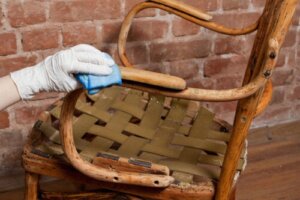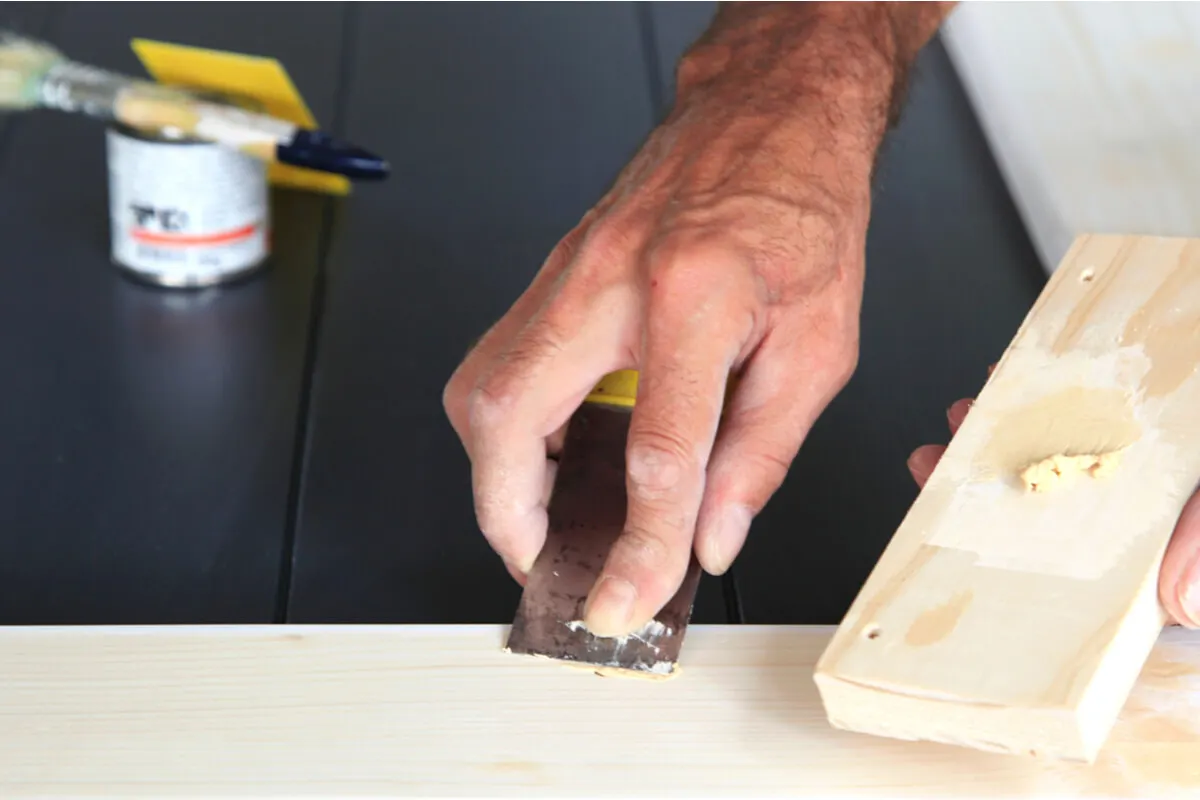3 Ways to Remove Varnish From Wood

Varnish is a transparent liquid composed of a mixture of oils that gives a shiny appearance and enhances colors. As a result, it’s one of the most popular products for beautifying furniture. However, sometimes the idea of renewing them arises. Therefore, here are three effective ways to remove varnish from wood.
This solution acts as a protective layer because it protects objects from the sun’s rays, humidity, and the proliferation of fungi. However, like any product, over the years, it can wear out, and it’s essential to remove it to apply a new one.
In addition to possible wear, the varnish can be removed to apply one that allows another brightness, texture, or color range. It’s essential to remove all the previous product so that the furniture is left with a perfect finish and a uniform tone.
3 tips to remove varnish from wood
There are different techniques to remove varnish from wood, and each person can choose what works best for their situation. The choice depends on the type of furniture and the number of layers that need to be removed.
In addition, the method can also be selected based on the amount of time you want to spend on the process. The following are the most efficient procedures to remove varnish from wood.
1. Paint stripper to remove varnish
Paint strippers are chemical solutions whose main function is to weaken old varnishes adhered to any type of surface. To handle the product, you need gloves, face shields, and face masks to avoid contact with toxic substances that can irritate the respiratory tract or the skin.
The first phase of the process can be started by sanding the varnish so that the product begins to loosen the most hardened areas. Then, you should apply the solution with a brush that helps to distribute the liquid well on all the furniture.
The paint remover has to be left to soak in for a maximum of two hours, depending on the amount of product that has been placed. You can tell that the chemical has finished working when it’s evident that the old varnish is lifted and then it can be removed without much effort.
It’s essential to apply hot water and rub the furniture with a towel to remove traces of the applied solution and the last traces of varnish. The technique is finished when the wood looks polished, without lumps, stains, or dirt. In any case, follow the indications on the label of the product you buy carefully.

We think you may also enjoy reading this article: Challenge Your Creativity with These 7 Original Ideas to Decorate Bottles
2. Sand the surface of the wood
This technique is ideal for removing varnishes that have several layers of application, as it can be weakened one by one manually. In addition, it’s more advisable for straight or smooth furniture, since it’s easier to sand them.
The process must be initiated with fine sandpaper that you can run over all the areas and that removes as much varnish as possible. Also, it should always be rubbed in the same direction.
After finishing the first coat, a new piece of sandpaper should be used to scrub closer to the wood to remove the missing varnish and to even out the parts that don’t look smooth. It’s important to keep in mind that sanding should be done without using excessive force that will scratch the original wood.
As a final step, you should wipe a clean towel over all the areas worked on to remove small amounts of varnish and dust. The person in charge has to make sure that no dirt is left behind to create stains when the new wood preservative is applied.
3. Clean the wood with hot air
This is the most sophisticated method to remove the varnish that needs to be changed, because the whole wood is cleaned with a hot air gun. This can be done without the need to rub a towel that subtracts the product little by little.
This tool is responsible for providing a heat that achieves that the varnish acquires a high temperature, inflates, and detaches from the surface. So, after passing the gun all over the furniture, you just have to shake it with a brush so that the wood looks shiny.
However, this technique must be carried out by a trained specialist because if the original wood receives excessive heat, it can burn. During the process, it’s also important to take breaks and allow the wood to rest so as not to cause irreversible damage.
This procedure is the most environmentally friendly method. It doesn’t require the use of toxic liquids that alter the balance of the environment. In addition, it’s the least uncomfortable method for the person doing it, since no substances that may generate allergies or serious health problems circulate.

Like this article? You may also like to read: Eco-Friendly Decoration: Sustainable Ways To Decorate Your Home
Be careful when removing varnish from wood
Removing varnish from wood requires chemicals and processes that can affect air quality. For this reason, it’s best to work in a well-ventilated space. Likewise, good air flow is essential for the product to dry in the best way and provide a great shine.
To apply a new layer of varnish, it’s always necessary to wear protective elements to avoid inhaling or handling toxins. Also, chemical solutions must be removed completely so that the furniture doesn’t act as a pollutant in the space where it will be placed.
It’s also important to take into account the opinions of specialists to select the varnish that best matches the needs of your home and the style of the furniture. In addition, you must be very careful to ensure that the protective coating will last for several year.
Frequently asked questions when removing varnish from wood
In this article, we’ve taken a detailed look at the available alternatives to remove varnish from wood, including how to use them. However, it’s likely that you have some questions about the process. Here are answers to several of the most common questions.
How long should I wait to repaint the wood after removing the varnish?
If you really want a quality finish, you should wait at least 24 hours before applying a new varnish or other finish to the wood. This applies mainly if you have used chemical-based methods. This is so that the product dries completely and doesn’t interfere with the final finish you want to achieve.
Can I use a wire brush to remove old varnish?
Wire brushes, steel wool pads, and other tools of the same caliber are not recommended for removing varnish from wood. The reason is very simple: using them can compromise the integrity of the wood itself, not just its finish. The use of electric sanders is also not recommended due to the difficulty in assessing the progress of the process.
Can I remove varnish from wood with alcohol?
Although you can achieve some effects with the help of denatured alcohol, the truth is that this is a technique that isn’t recommended. The process is very arduous and uncomfortable and can cause stains on the wood. In addition, its odor can have adverse effects, and its flammable effects can be dangerous when used on a large scale.
Why does varnish become old?
There are many reasons why a varnish may fade, although in principle, it’s a finish that isn’t designed to last forever. Exposure to sun and water are perhaps the most damaging agents to varnish. Other natural agents, such as smoke, can have the same effect. Not respecting the drying time, using a poor quality product, and not having treated the wood properly are other reasons why a varnish may fade.
If you have any questions about removing varnish from wood, you can always consult a professional. Do this especially if you appreciate the furniture or the object that you want to work on since a bad technique can spoil it. In any case, the indications presented here can be very helpful.
All cited sources were thoroughly reviewed by our team to ensure their quality, reliability, currency, and validity. The bibliography of this article was considered reliable and of academic or scientific accuracy.
- Camacho A. Barnizado o acabado de la madera [Internet]. (S.L): (S.E); (S.F) [citado 04 de mayo de 2021]
- Castro A. Solventes y diluyentes para la remoción de barnices: revisión de la teoría básica para la conceptualización del trabajo práctico [Internet]. (S.L): (S.E); 2004 [citado 04 de mayo de 2021]
- Valverde H. Manual de barnices y preparación de charoles según los procederes más recientes [Internet]. París: Librería de Rosas y Bouret; 1869 [citado 04 de mayo de 2021]
- Sánchez A. Sedano U. Pérez S. Soler J. Desplechin H. Palao M. Sistemas para la eliminación o reducción de barnices. Estudio de residuos. Protocolos de actuación [Internet]. Barcelona: (S.E); 2006 [citado 04 de mayo de 2021]
This text is provided for informational purposes only and does not replace consultation with a professional. If in doubt, consult your specialist.








